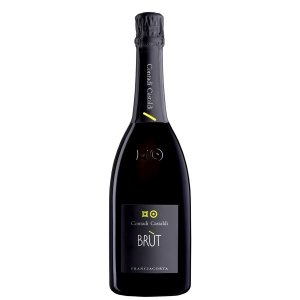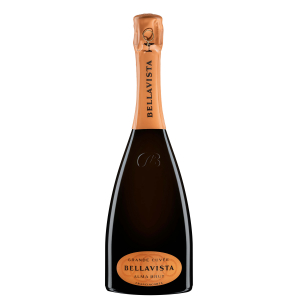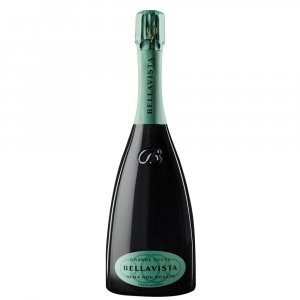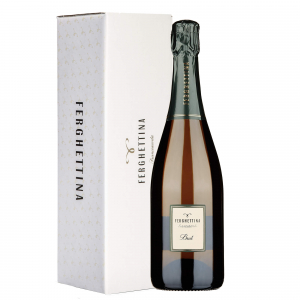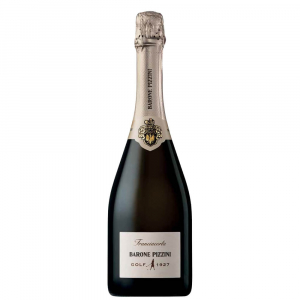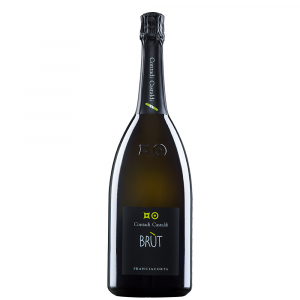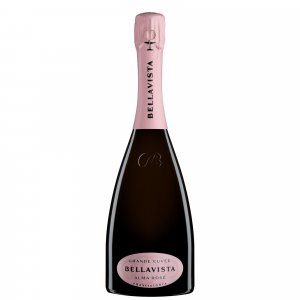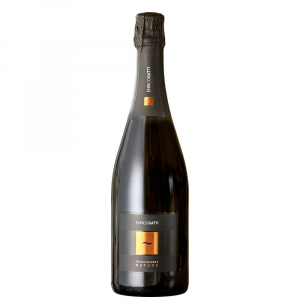Franciacorta
Considered by many to be Italy’s answer to Champagne, Franciacorta is a sparkling wine hailing from the eponymous region in the province of Brescia. Franciacorta is produced using the méthode champenoise, or traditional method, whereby the wine’s second fermentation occurs after bottling. The wine then ages in contact with the lees at length – at least 18 months, rising to between two and five years for premium bottles – giving rise to a complexity of flavour not commonly found in its cousin, Prosecco, whose second fermentation is carried out on a far larger scale in stainless steel tanks. Given the prestige associated with Franciacorta’s production method, it will come as no surprise that this sophisticated fizz boasts a DOCG qualification, exhibiting many of the same characteristics and flavours as its French counterpart, albeit with lower acidity due to the particularities of its terroir. Indeed, a unique microclimate in a sheltered valley sculpted over the millennia by glacial erosion contrives to give Franciacorta its singular taste profile. Four grape varieties grown here are commonly used to make Franciacorta’s sparkling wines – Chardonnay, Pinot Blanc, Pinot Noir and Erbamat (also known as Albamatta) – and it is estimated that over 80% of the region’s vineyards are cultivated organically.
What do Franciacorta sparkling wines taste like? Depending on the dosage (added sugar), Franciacorta wines can range from extra brut to demi-sec (very dry to semi-sweet respectively). As with Champagne, common flavors include brioche or biscuity notes, with a hint of lightly toasted nuts, perhaps a touch of lemon, and a slightly floral finish. Franciacorta has high acidity and a relatively low alcohol content, ranging from 10-11.5 ABV. It is sold for immediate consumption but can also easily be cellared for five to ten years. Franciacorta is available in vintage and non-vintage versions, along with a rosé wine and satèn variety (equivalent to blanc de blancs for Champagne and made with only Chardonnay and Pinot Bianco grapes).
Which are the best Franciacorta wines? If you are new to Franciacorta, consider trying a sophisticated cuvée brut, such as the Franciacorta Bellavista Cuvée Alma Brut. Straw yellow with greenish highlights, this savory Franciacorta presents ripe fruit on the nose and a touch of vanilla, giving way to a crisp mouthfeel and persistent, well-balanced finish. Or perhaps the Franciacorta Cuvée Prestige from the Ca’ del Bosco winery: its golden highlights and fine bubbles are sure to delight, even before its almond, citrussy and peach notes reach the nose. If, on the other hand, you are a fan of pink wines, a Franciacorta brut rosé cannot fail to please, and the distinctive square pyramid-shaped bottle of Ferghettina’s 2018 offering will be a stylish addition to any table. This sparkling rosé presents notes of crusty bread which cede to aromas of recently picked red fruit. Notes of blackberry and raspberry are present in the finish, yet the mouthfeel is still pleasingly fresh. Last, but most definitely not least, are the historic wines from the Berlucchi winery – the first to make Franciacorta, thus setting the standard for those to follow.
What are good food pairings with Franciacorta? Franciacorta sparkling wines are perfect for lingering over a laid-back aperitivo with friends and will enhance almost any savory antipasti: think grilled artichokes, soft rind cheeses, salted almonds and prosciutto, for example. Perhaps more surprisingly, Franciacorta is also highly recommended by those in the know to accompany more substantial dishes, such as seafood-based main courses, lightly creamy pasta dishes, and risottos.
With the majority of Franciacorta production currently being consumed in Italy, perhaps it’s time to organize a Franciacorta wine tasting and spread the word on this well-kept secret?
You viewed of 125 products
Show more


